How to Build Tableau reports on Google BigQuery Data Using the Progress DataDirect Google BigQuery Driver for ODBC
Introduction
Progress DataDirect’s ODBC Driver for Google BigQuery offers a high-performing, secure and reliable connectivity solution for ODBC applications to access Google BigQuery data. Our ODBC driver can be easily used with SQL across all platforms - Unix / Linux, AIX, Solaris, Windows, and HP-UX. Enjoy real-time analytics, reporting, and business intelligence (BI) capabilities with your favorite tools such as Tableau, Power BI, Qlik, Excel, Cognos, Informatica, SAS, Board, MicroStrategy, SSIS, Oracle OBIEE, and more. In this tutorial, you will learn how to configure the DataDirect Google BigQuery ODBC driver within Tableau Desktop to create reports. These steps can also be used to configure any ODBC connection with Tableau.
Prerequisites
This tutorial assumes that you have ODBC drivers installed and a data source configured. If you have not yet done these steps, please follow these instructions:
- Download and install the Progress DataDirect Google BigQuery ODBC driver for your database using the 15-day trial software. In this tutorial, we are connecting to Google BigQuery.
- Configure a data source for your database. See the DataDirect documentation for assistance with setting up your data source. The sample below uses a data source.
Configure Connection to Google BigQuery Driver Using the Configuration Manager
- After the DataDirect Google BigQuery ODBC driver has been installed, open ODBC Administrator to configure the connection and click on Add.
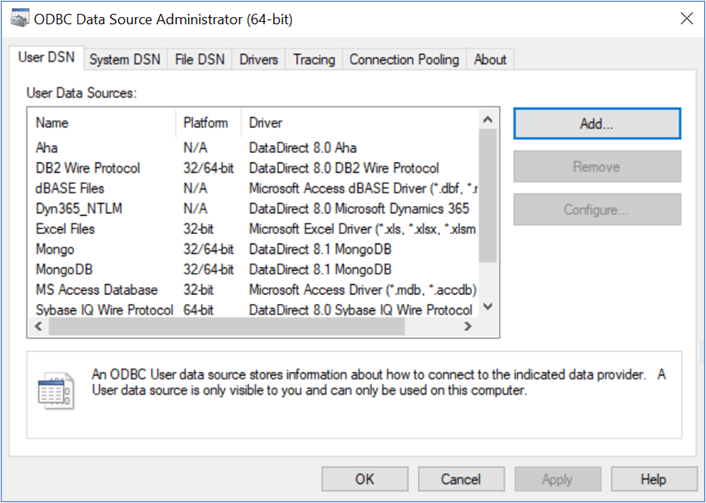
- Choose the “DataDirect X.X Google BigQuery” driver and click on “Finish.”
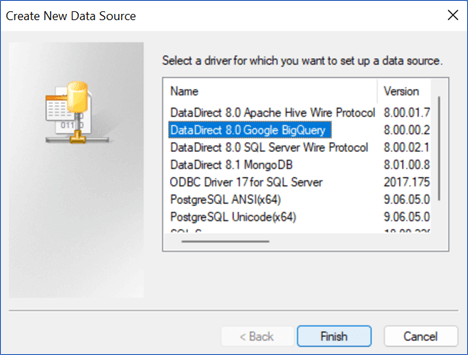
- You should now see the ODBC Google BigQuery Driver Setup pop-up window launched.
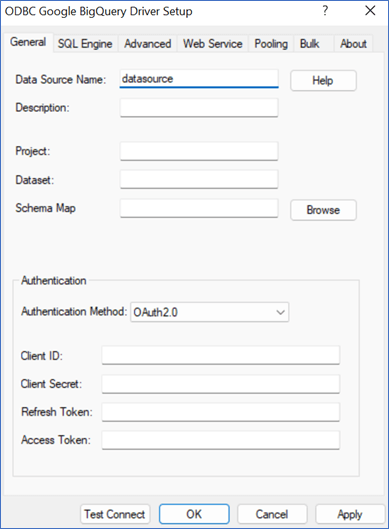
- Add your Data Source Name, project, dataset, and other credentials, and click on “Apply” and then “Test Connect.” You can learn how to get client id, client secret, access token, and refresh token here.
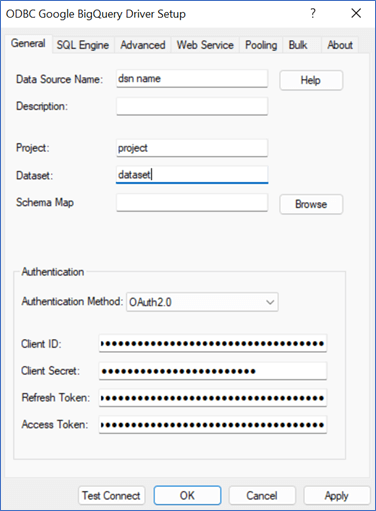
- A pop-up window will confirm that the connection is established.

Connect to an ODBC Datasource
- Start Tableau and select the “Other Databases (ODBC)” option.

- In the pop-up window select the “DSN” radial button and choose the data source previously configured to connect to Google BigQuery in the dropdown and click on “Connect.”
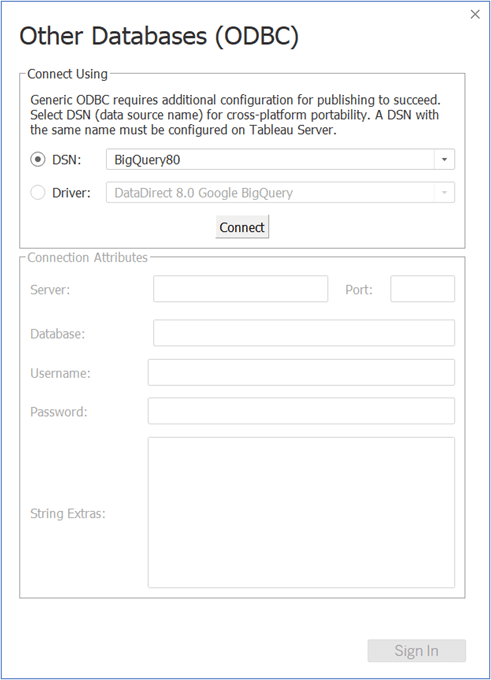
- Enter any additional parameters required to connect to your Google BigQuery data sources, such as a username and password, and select “Sign In.”
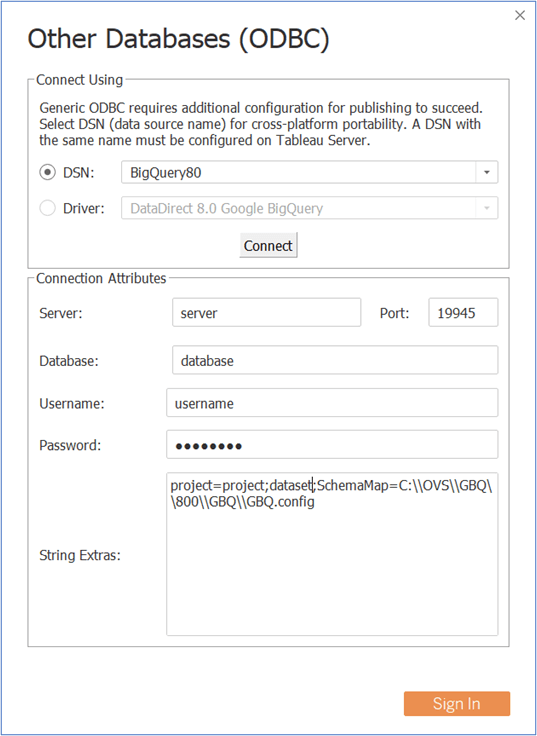
- The Tableau configuration screen should now appear.
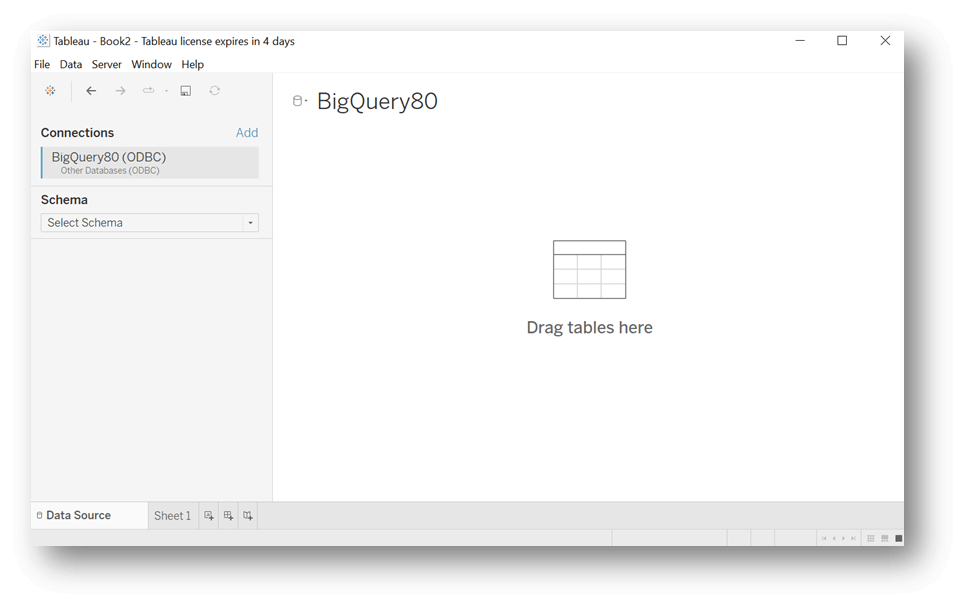
You can use Tableau's schema and table drop-down list to browse and select your data.
- For example, you can execute a statement such as "Select * from schema_name.table_name" and then click on the "Sheet 1" option at the bottom of the Tableau screen.
This screen will allow you to select data and create tables or charts, such as the sample below:
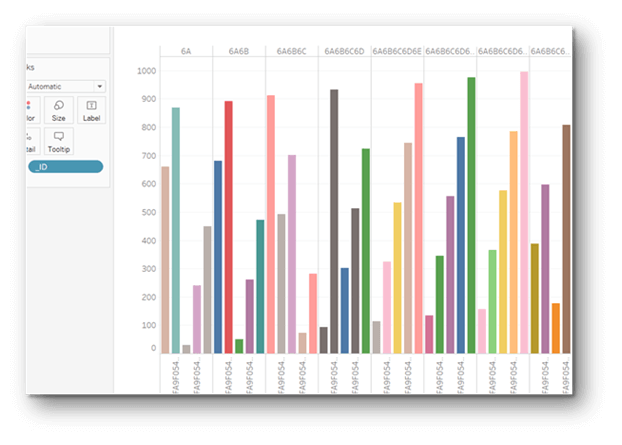
Conclusion
Get started today with a free 15-day trial of Progress DataDirect Google BigQuery ODBC driver and connect Tableau to all your data!
Contact Us for assistance with any questions you may have.